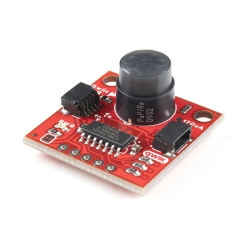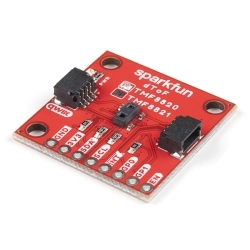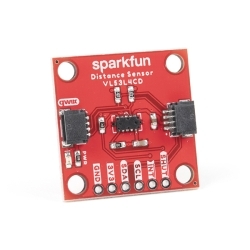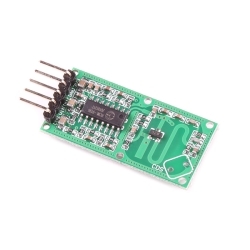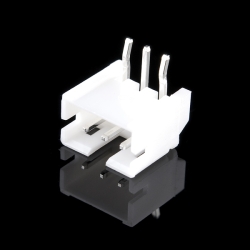PIR Motion Sensor (JST)
Product Overview
This is a simple to use motion sensor. Power it up and wait 1-2 seconds for the sensor to get a snapshot of the still room. If anything moves after that period, the 'alarm' pin will go low.
This unit works great from 5 to 12V (datasheet shows 12V). You can also install a jumper wire past the 5V regulator on board to make this unit work at 3.3V. Sensor uses 1.6mA@3.3V.
The alarm pin is an open collector meaning you will need a pull up resistor on the alarm pin. The open drain setup allows multiple motion sensors to be connected on a single input pin. If any of the motion sensors go off, the input pin will be pulled low.
We've finally updated the connector! Gone is the old "odd" connector, now you will find a common 3-pin JST! This makes the PIR Sensor much more accessible for whatever your project may need. Red = Power, White = Ground, and Black = Alarm.
Documents:
-
-
 SparkFun PIR Breakout - 170uA (EKMC4607112K)
Special Price Current price: $12.90 Regular Price Original price: $21.50In stock
SparkFun PIR Breakout - 170uA (EKMC4607112K)
Special Price Current price: $12.90 Regular Price Original price: $21.50In stock -
-
 SparkFun PIR Breakout - 1uA (EKMB1107112)
Special Price Current price: $14.95 Regular Price Original price: $32.50In stock
SparkFun PIR Breakout - 1uA (EKMB1107112)
Special Price Current price: $14.95 Regular Price Original price: $32.50In stock -
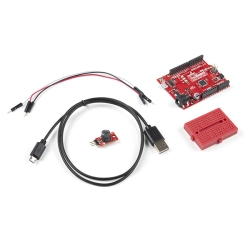 SparkFun PIR Breakout Starter Kit (1uA)
Special Price Current price: $25.25 Regular Price Original price: $48.95In stock
SparkFun PIR Breakout Starter Kit (1uA)
Special Price Current price: $25.25 Regular Price Original price: $48.95In stock -
-
-
-
-
 SparkFun PIR Breakout Starter Kit (170uA)
Special Price Current price: $30.36 Regular Price Original price: $39.95In stock
SparkFun PIR Breakout Starter Kit (170uA)
Special Price Current price: $30.36 Regular Price Original price: $39.95In stock -
-
 SparkFun RGB and Gesture Sensor - APDS-9960
Special Price Current price: $3.99 Regular Price Original price: $16.75In stock
SparkFun RGB and Gesture Sensor - APDS-9960
Special Price Current price: $3.99 Regular Price Original price: $16.75In stock -
Documentation
Customer Reviews



 Hookup Guide
Hookup Guide Datasheet
Datasheet